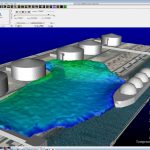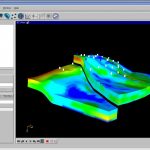


N.B.: When writing your own modules you should include checks so that when loading new modules conflicting modules are either unloaded or a warning is issued. Set ver "X.Y" module-whatis "Name : $name" module-whatis "Version : $ver" module-whatis "Description : Add desc of MYAPP here" set base_dir /path/to/my/software/dir prepend-path PATH $base_dir/$name/$ver prepend-path LD_LIBRARY_PATH $base_dir/lib prepend-path MANPATH $base_dir/man prepend-path INFOPATH $base_dir/info setenv MYAPP_DIR $base_dir setenv MYAPP_BIN $base_dir/bin setenv MYAPP_INC $base_dir/include setenv MYAPP_LIB $base_dir/lib Problems with these instructions? Please send comments here. etc/group) -help: extended help version 1.1
#ABAQUS PARAVIEW FULL#
etc/passwd) -groupfile: full path to group file (i.e.
#ABAQUS PARAVIEW PASSWORD#
titan_quotas) -fslist: full path to sponsor filesystems file -passwdfile: full path to password file (i.e. Usage: /u/local/bin/myquota.pyc [-xquotafile: full path to quota file (netapp, panasas) (i.e. For example, to display the utilization on /u/project/bruingrp: To display the utilization, sorted by space consumption, by all users on a project directory on a terminal on the Hoffman2 Cluster issue myquota -ss -g myproject (where myproject is the name of your project directory if applicable). For a project directory, this summary line will tell you how much of the total project directory disk and file quota has been consumed in the aggregate by all users who have access to it. The fifth column shows your file quota on the filesystem.įollowing each filesystem line of data is a summary that shows your usage (also in percent) on the filesystem. The fourth column shows your current file usage on the filesystem. The third column is your quota on the filesystem. The second column shows your current usage (in GB by default) on the filesystem. The first column lists the filesystem for which the quota is being reported. Where the data columns, from left to right, describe: To see a complete list of option at the command line issue:

If a user is running more than one job the output of check_usage contains the information for each and every job on each node in which is running (including array jobs for which tasks are shown). In the present case only one process is running, python ( COMMAND column of output of top), and the summary shows that at the time the command was run the user’s job was using 6.358 ( CORES_USD column of the summary) of the 8 computing cores available to the job ( CORES_REQ column), 8.5 GB of resident memory ( RES MEM(GB) column). The verbose output of check_usage shows the relevant output from the command top for any processes running by the user joebruin and its summary. = on node: n2030 processes are Output from command top: PID USER PR NI VIRT RES SHR S %CPU %MEM TIME+ COMMAND 23409 joebruin 20 0 12.7g 8.5g 58m S 635.8 27.1 306:44.45 python Summary: HOSTNAME CORES_USD CORES_REQ N_PROCS RES MEM(GB) VMEM(GB): n2030 6.358 8 1 8.5 12.7 List of Job IDs, related resources requested and nodes on which the job is, or its tasks are, running: JOBID: 5611331 hard resource_list: exclusive=TRUE,h_data=3g,h_rt=43200 exec_host_list 1: n2030:8 +++++ User is joebruin This command may take a few seconds before giving output.

#ABAQUS PARAVIEW HOW TO#


 0 kommentar(er)
0 kommentar(er)
